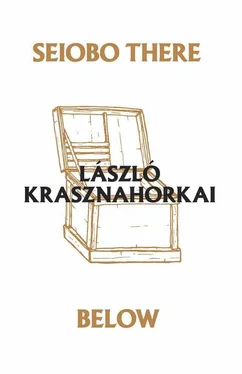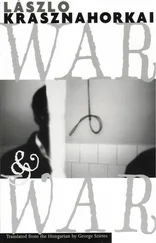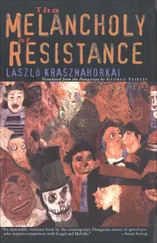He began with Titian, because first of all Cavalcasalle had done so, then Fischel and Berenson decisively, then Suida with doubts, and finally in 1955, a certain Coletti reached the definite conclusion that the creator of the painting was none other than Titian, yet this attribution, if the word itself applies, can be accepted only with the same difficulty as that which followed afterward; above all, if we look at it from today, the principles employed were just as baseless as what was stated afterward; in any case Signor Pignatti came along and announced — twice to be exact, in 1955 and 1978 — that all of this Titian-attribution was a mistake, for the analysis of the painted surfaces as well as the dolcezza in the use of color made it clear that it was the circle of Giorgione that could be thanked for the canvas, a view as surprising as much as it was incomprehensible, for he, that is Giorgione, was at that time not considered a religious painter, no pictures of his on sacral themes have survived; the only one we know originating from him on any such motif, the “Castelfranco Madonna,” is a work commissioned to this mysterious genius by Amateo Constanzo for the burial of his son Matteo; in a word, utter confusion dominated the question of who painted the picture, a confusion that was finally crowned by the commencement in 1988 of a mutually reinforcing war of hypotheses, which was begun by Mauro Lucco, who stated: well, my honored ladies and gentlemen, please forgive me, but the painting almost certainly originated from the brush of Giovanni Bellini; let us place it side by side with the work entitled “The Drunkenness of Noah,” which can be seen in Besançon; and after this there was no stopping, Michel Laclotte came along, pointed his short index finger at the “Cristo morto nel sepolcro” and said “Bellini,” and then Anchise Tempestini stepped in, and finally Miss Goffen, and they said “Bellini,” just as did the postcards of scandalously poor quality displayed on the tables behind the ticket counter, unambiguously indicating with no discussion, with not even one tiny question mark at the end, the great Bellini, despite the fact that by then scholars had at their disposal the expert opinion of the distinguished Hans Belting, who considered the authorship of the given painting by Titian as self-evident, and moreover in such a fashion that he was the only one who did not make any argument but simply referred to “the painting by Titian” and that was it; so that the uncertainty could have been absolute had not the Confraternita — containing more than a few Bellini-proponents — closed the matter for once and for all, declaring Giovanni Bellini as the author of the picture, so that after this point no one raised the question again, the matter seemed to be closed and it very well could have remained so, in this atmosphere of mutually exclusive attributions, had not the art historian of the Confraternita, Dr. Agnese Chiari, been troubled by something about this valued treasure of S. Rocco, and not brought it to the attention of Dr. Fatima Terzo, who shortly before the turn of the millennium had paid a visit here from the Vicenza branch of Banca Intesa, that is from the Palazzo Leoni Montanori, she had said that there’s something else here, among all the sensational Tintorettos: a little picture, the whole thing no larger than 56 by 81 cm., clearly belonging to the imago pietatis tradition as posited by Belting and hence referring back to the Byzantine heritage; it was in such poor condition that it deserved a little attention; Dr. Chiari glanced meaningfully at Dr. Terzo, who was responsible for all cultural matters at the bank, while she arranged for her to see in more tranquil surroundings, in the little camarilla on the second floor to the right, what was at play here; it could, she repeated with an innocent face, do with a little repair, because it’s very beautiful, isn’t it, asked Agnesee Chiari, and let the protective brocade fall before her guest in the narrow space of the camarilla, beautiful, replied Dr. Terzo in astonishment upon seeing the picture, so that afterward, with no further discussion, the picture turned up in the hands of the master Egidio Arlango, and the always risky undertaking of restoration work began, the chief goal of which, for Agnese Chiari and the Scuola Grande Arciconfraternita di San Rocco, was to bring to a halt the evident disintegration of the picture, its physical stabilization, declared Dr. Chiari to the council members at the voting colloquium of the Confraternita, because truly, in the upper and lower sections of the work, where the canvas had been stretched onto its frame, and was thus at its tautest, serious damage was visible, even to the naked eye, so now, when Mr. Arlango examined it more carefully with his magnifying glass, to note in the inventory where exactly the most serious problems lay, and of what character they were, it became obvious that if no intervention were made, the work would begin to crack apart within a few years at these given spots, the paint would chip off, and hence the damage caused by the long delay would be irreparable; but in the restoration workshop of Mr. Arlango they found other problems as well, here a patch where the strength of the color had waned, there a crown of thorns that had lost its outline, then the faded Greek initial letters on both sides of the head, and the generally dark, seemingly homogeneous background itself, which already cried out with its countless fissures for the hand of Mr. Arlango; so that of course for all of them — the Banca Intesa, Mr. Arlango, and Dr. Agnese Chiari — the undeniable overriding intention was to repair the artwork and halt its further decay; thus, for all of them, but particularly the ambitious art historian, a much more deeply hidden goal was at work: to know, that is to decide through the means of restoration, who was in fact the true painter, and particularly so that they could say it was without doubt Tiziano, or without doubt Bellini, or without a doubt Giorgione, and the San Rocco collection would be enriched by a major artwork of clear attribution, so that Dr. Chiari came to look at the restorer’s workshop nearly every single day, to ask: Giorgione? Tiziano? Giovanni Bellini? — Mr. Arlango, though, did not reply for a long time; in addition, Mr. Arlango, with his squashed-together face, was a person of fairly disagreeable aspect, perhaps because of his physical deformity or perhaps because of something else, he was decidedly humorless, unfriendly, and taciturn, an individual who disliked strangers coming into his workshop; he didn’t even pause to answer if someone asked a question but only spoke when it was truly necessary, and in this case it was certainly not necessary one bit, because nothing had been determined, and how could anything have been determined anyway; when they had photographed the painting from all angles, with the greatest possible caution, and had begun to remove the canvas from the frame — even figuring out how to perform this task took a week to decide — then the examination of the frame itself followed, and Dr. Chiari realized that she had to deal with Mr. Arlango in an altogether different manner, that it would be better to let him work undisturbed, to reduce the number of her visits; indeed, she asked for his advice as to when it would be good to come back, to which of course the broadest smile possible appeared on Mr. Arlango’s sour face as he happily announced, Come back in a year’s time, then abruptly turning away from Dr. Chiari, he addressed himself to another painting, as he began to dig away with a tiny scraping knife at the joists of the frame, his back turned toward her, and the broad smile of a moment ago became a prolonged smile of satisfaction displaying his yellow teeth; this smile lasted for quite a while, this inimitable gaiety practically affixed to his sour face, so that the yellow teeth stinking of nicotine only disappeared beneath the chapped lips in Mr. Arlango’s squashed-together countenance when he heard, over the sounds of the knife scraping against the frame, someone leaving the studio and closing the door quietly behind herself.
Читать дальше












